
In this easy-to-do activity you will simulate the fluid shift felt by astronauts upon entering space.
- Subject:
- Physical Science
- Material Type:
- Activity/Lab
- Author:
- National Air and Space Museum
- Date Added:
- 06/28/2022

In this easy-to-do activity you will simulate the fluid shift felt by astronauts upon entering space.

Have you ever dreamed of becoming an astronaut? Use this slide show presentation as an introduction to the many challenges of living and working in space.

Living and working in space presents many challenges for humans. Use this student guide to explore what many of those challenges are as well as possible solutions.
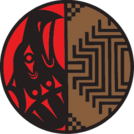
The original Native American story component lesson was developed as part of an Office of Superintendent of Public Instruction (OSPI) and Washington State Leadership and Assistance for Science Education Reform (LASER) project funded through an EPA Region 10 grant. The stories were told by Roger Fernandes of the Lower Elwha Klallam tribe. Mr. Fernandes has been given permission by the tribes to tell these stories.As these lessons and stories were shared prior to the adoption of the Washington State Science Learning Standards in 2013, there was a need to align these stories with the current science standards. This resource provides a current alignment and possible lesson suggestions on how these stories can be incorporated into the classroom. This alignment work has been funded by the NGSS & Climate Science Proviso of the Washington State Legislature as a part of North Central Educational Service District's award.

As part of our continued commitment to education, the team at The Bee Cause Project has created this companion document, Educator’s Curriculum Guide, to supplement the Nature’s Partners curriculum.Our Tips from the Hive are designed to add layers of concept extensions, optional digital methods of delivering content, and support to educators that are either brand new or experienced environmental educators. The Buzz Worthy Resource Materials are video links, notable articles, and more printable resources, while the Bee Cause Book Club highlights recommended readings for students of all ages. Several titles have quality read-aloud links as well.

PARTS OF A PLANTLesson overviewName of student teacher: Kely Forero Cano, Shirley Cabrera Cometa, Sheila Vanesa Montilla Mosquera, Sharon Ivonne Uriza Cachaya.School / Institution: Institución Educativa Olivero Lara Borrero Date: May 16, 2019. Clase / Grado: Fourth Grade Time and length of class: 2 hoursAchievement: The topic ‘’Parts of a plant’’ will be taught in real context while Ss are interacting at the same time. Students will be able to identify plant parts and named them in a real-life situation.

This webpage from the Fast Plants website explains how to pollinate Fast Plants, including instructions for making bee sticks and pollination videos and tips.
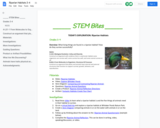
Animals have traits physical and behavioral that help them survive. Some traits help animals be more successful in survival than others.

Download and print this colorful "Science Inquiry Map" Poster featuring the web of inquiry processes as described by the Five Essential Features of Inquiry from the National Science Education Standards. In addition, the model of inquiry described by the Five Essential Features aligns directly with the Science Practices described in the Next Generation Science Standards. Generally, this poster is used by elementary and middle-school teachers to support learners in being metacognitive about what science practices are in the foreground of their current work during an investigation.
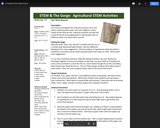
In this lesson, students will investigate seeds and the process of seeds growing to become the food we eat. Includes activity instructions, extension activities, songs, and a vocabulary list.
NGSS: Partially meets 2-LS2-1, Extension activities meet 4-LS1-1, 5-LS-1
Common Core: W.2.7, W.2.8, Extension activities meet MD.K, MD.1, MD.2.1, MD.3.3, MD, 4.4, MD.5
Social Sciences: 3.12, 4.12
Time: 45 minutes
Materials: "Seed, Soil, Sun" or other book about seed germination and plant growth, clear plastic cups, paper cups, paper towels, seeds, water

A 23-page PDF file (644 KB) with a complete set of activities for elementary students (also effective in middle school) to learn about the life cycle of flowering plants with a focus on reproduction. Students predict how many seeds their Fast Plant will produce and engage in planting, growing, observing doing supporting learning activities to understand the life cycle. Carolina Biological sells a kit to accompany this activity for a class of 32 students, containing the seeds and planting materials. Alternatively, the activity can be taught using the "how to grow" instructions on the Fast Plants website, seeds from a packet of Standard Wisconsin Fast Plants (or seeds from Fast Plants you grow yourself) and your own potting mix and growing system. A 24-hour light source is needed for this activity.

This is a short reading passage with a small set of questions that could be expanded upon. It is modeled after standardized assessments and aligned to the Next Generation Science Standards.
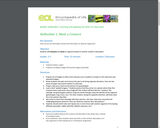
Students practice making observations, describing physical characteristics of organisms, and interpreting information. In pairs, students sit back to back; one student describes a creature and the other draws based on the partner’s description.
Educators Guide for this unit:
http://education.eol.org/lesson_plans/2-5_ScienceSkills_BioblitzSkillbuilderOverview.pdf
Lessons in this unit:
Biodiversity Skillbuilder 1: Meet a Creature
Biodiversity Skillbuilder 2: ID That Bird!
Biodiversity Skillbuilder 3: How Diverse is Biodiversity?
Biodiversity Skillbuilder 4: Modeling Classification
Biodiversity Skillbuilder 5: ID Using a Dichotomous Key
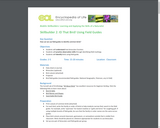
Students observe cutouts of birds around the classroom, sketch and describe field markings, and use field guides to make identifications.
Educators Guide for this unit:
http://education.eol.org/lesson_plans/2-5_ScienceSkills_BioblitzSkillbuilderOverview.pdf
Lessons in this unit:
Biodiversity Skillbuilder 1: Meet a Creature
Biodiversity Skillbuilder 2: ID That Bird!
Biodiversity Skillbuilder 3: How Diverse is Biodiversity?
Biodiversity Skillbuilder 4: Modeling Classification
Biodiversity Skillbuilder 5: ID Using a Dichotomous Key
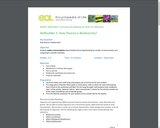
Students explore biodiversity statistics by hypothesizing the number of animal species and comparing to scientific estimates.
Educators Guide for this unit:
http://education.eol.org/lesson_plans/2-5_ScienceSkills_BioblitzSkillbuilderOverview.pdf
Lessons in this unit:
Biodiversity Skillbuilder 1: Meet a Creature
Biodiversity Skillbuilder 2: ID That Bird!
Biodiversity Skillbuilder 3: How Diverse is Biodiversity?
Biodiversity Skillbuilder 4: Modeling Classification
Biodiversity Skillbuilder 5: ID Using a Dichotomous Key
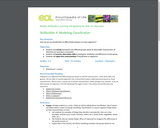
Students classify themselves into different groups based on observable characteristics of clothing and accessories, then apply to biological classification systems.
Educators Guide for this unit:
http://education.eol.org/lesson_plans/2-5_ScienceSkills_BioblitzSkillbuilderOverview.pdf
Lessons in this unit:
Biodiversity Skillbuilder 1: Meet a Creature
Biodiversity Skillbuilder 2: ID That Bird!
Biodiversity Skillbuilder 3: How Diverse is Biodiversity?
Biodiversity Skillbuilder 4: Modeling Classification
Biodiversity Skillbuilder 5: ID Using a Dichotomous Key

This activity is designed for teaching the functions of basic plant structures. The activity uses two types of matching cards containing either a) Structures - depictions of plant structures b) Functions - descriptions of the function of plant structures Using the downloadable PDF (including instructions for printing) you can make one set of cards per student or per student group, and students can cut out their own cards. This activity can stand on its own, or if you are teaching the Investigating Brassicas Around the World lesson, you can extend this activity by instructing students to match their Structure/Function pairs with the Brassica vegetables they observed in the lesson. This activity can also be used to begin a discussion about how plant breeding focuses on different plant structures, which has contributed to the variation we observe in different Brassica vegetables.
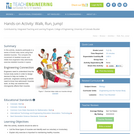
In this activity, students participate in a series of timed relay races using their skeletal muscles. The compare the movement of skeletal muscle and relate how engineers help astronauts exercise skeletal muscles in space.
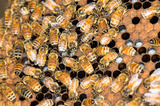
Learn how important the honey bee's body structure is to survival in the hive.What if there were no bees? How would it affect our grassland animals? How would it affect humans? This learning module offers insight into the problems that countless animals and plants face with the potential loss of the bees. Discover just how important this tiny species is to the food web of this ecosystem.This module could be incorporated into a larger environmental science module.This lesson includes learning objectives, material and resource lists, background information, activities, videos, writing assignments, a game, assessments, and support documents. See the Educator's Guide for more video links and recommended readings. Remix of: 1.Create a Bee Hummer, Science Snacks Exploratorium 2. What If There Were No Bees? A Bee Cause Project 3. Hive Alive! Bee Bodies
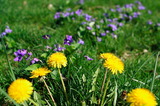
This professional development course consists of a series of workshops focused on NGSS-aligned & local phenomenon-centered curriculum, developed by IslandWood with funding from the OSPI ClimeTime Grant. It is currently structured to be delivered online and for Upper Elementary (3-5) educators. A slide deck and accompanying handouts are available to complement the course outline.